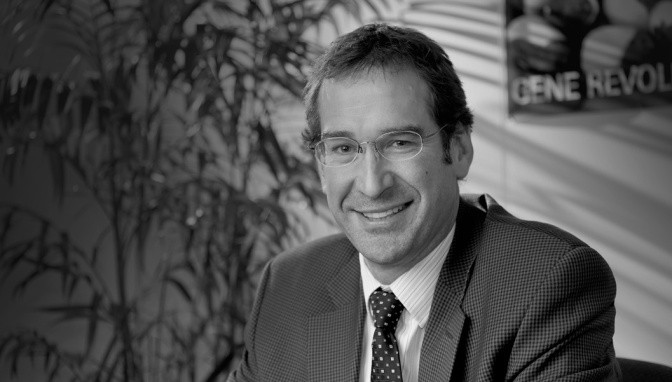By Nick Austin
Director, Agricultural Development, the Bill and Melinda Gates Foundation
For those of us who are immersed in agricultural research
and development, so much of what we do is often buried in the technical language of science, engineering and economics. But it’s a deep,emotional commitment to our work, and the potential impact it will have on people’s lives that drives us.
development, so much of what we do is often buried in the technical language of science, engineering and economics. But it’s a deep,emotional commitment to our work, and the potential impact it will have on people’s lives that drives us.
This is the energy that fueled Dr. Norman Borlaug. His key scientific achievements are legendary—the development of disease-resistant and high-yielding rice and wheat varieties that saved millions of lives. But he is almost equally well known for bringing a passion and urgency to the push for agriculture innovations that caught the attention of leaders around the world.
At the Bill & Melinda Gates Foundation, we are committed to investing in global public goods through our work in agricultural R&D. We focus on generating scientific breakthroughs and getting those innovations to smallholder farmers.
We are supporting early research, led by scientists at the University of Illinois, looking at boosting the efficiency of photosynthesis, which has the potential to increase plant yields by 20 to 40 percent. To put this in perspective, plant breeders often struggle to obtain gains of just one or two per cent with conventional breeding approaches. While we need to be mindful that these are early results, it highlights the tremendous leaps that we can make to boost food production through investments in R&D.
We need these innovations now more than ever. Last month, we learned that after a decade of progress, global hunger is on the rise again, affecting 815 million people in 2016, or 11 per cent of the global population. The stark reality is we will need to develop new strategies for growing more with less impact on scarce resources and a changing climate. R&D will play a huge role in helping the world rise to this challenge.
But there are also reasons to be hopeful. Another report reinforced what we at the foundation know to be true of the world’s rural areas: they have the potential to be the drivers of economic growth fueled by food production. In fact, if Borlaug were alive today to attend his namesake event, he would see that there is a broad coalition forming around the push to transform agriculture in Africa—and in so doing, transform the lives of smallholder farmers and the economies of the countries in which they live.
It's a positive sign. The commitment embedded in the second sustainable development goal (SDG2), to end hunger by 2030 and promote sustainable agriculture, requires summoning an unprecedented level of technology, talent, resources and political support.
We are seeing strong signs that African leaders are rising to the occasion. Among other things, they have agreed to contribute to a new agriculture scorecard that will track progress through detailed indicators of agricultural growth. For the first time we will have something close to real time assessments of where we are progressing and what needs more attention. In a related development, a new Women’s Empowerment in Agriculture Index (WEAI) was created earlier this year to track the challenges and opportunities facing Africa’s women farmers.
Borlaug might be particularly pleased to see the infusion of insights and energy flowing into the African agriculture transformation from a man who is a key force behind the TAAT initiative—and who is also this year’s recipient of the World Food Prize: AfDB President Akinwumi Adesina.
Akin started his career in agriculture as a researcher at the International Institute of Tropical Agriculture (IITA) in the 1990s, and previously served as Minister of Agriculture for Nigeria. He has emerged as a charismatic champion capable of building broad coalitions in support of African agriculture. In fact, he is being referred to by some as “Africa’s Norman Borlaug.”
Akin—like Norman Borlaug— knows how to engage agriculture issues at the farm level, at the ministerial level, from the private sector perspective and among donors and financial institutions. His energy is as infectious as is his ability to communicate about complicated issues in creative ways. His new “High Fives”—light and power Africa; feed Africa; industrialize Africa; integrate Africa; and improve the quality of life for all Africans—succinctly capture the broader context of our agricultural work.
These are exactly the kind of connections Dr. Borlaug wanted to highlight and inspire when he established the World Food Prize and Borlaug Dialogue. He knew that agriculture’s potential to end hunger and poverty had a unique power to attract incredibly broad support.
We will rightly spend considerable time at this year’s Borlaug Dialogue discussing the many challenges for achieving our goals in Africa. They include low yields and low productivity, a changing climate, systems and policies that fail to meet farmer’s needs, and a lack of opportunity and resources for women farmers. But we should also emerge from this gathering revitalized by the strong sense of a shared purpose that animates our work.


 development, so much of what we do is often buried in the technical language of science, engineering and economics. But it’s a deep,emotional commitment to our work, and the potential impact it will have on people’s lives that drives us.
development, so much of what we do is often buried in the technical language of science, engineering and economics. But it’s a deep,emotional commitment to our work, and the potential impact it will have on people’s lives that drives us.